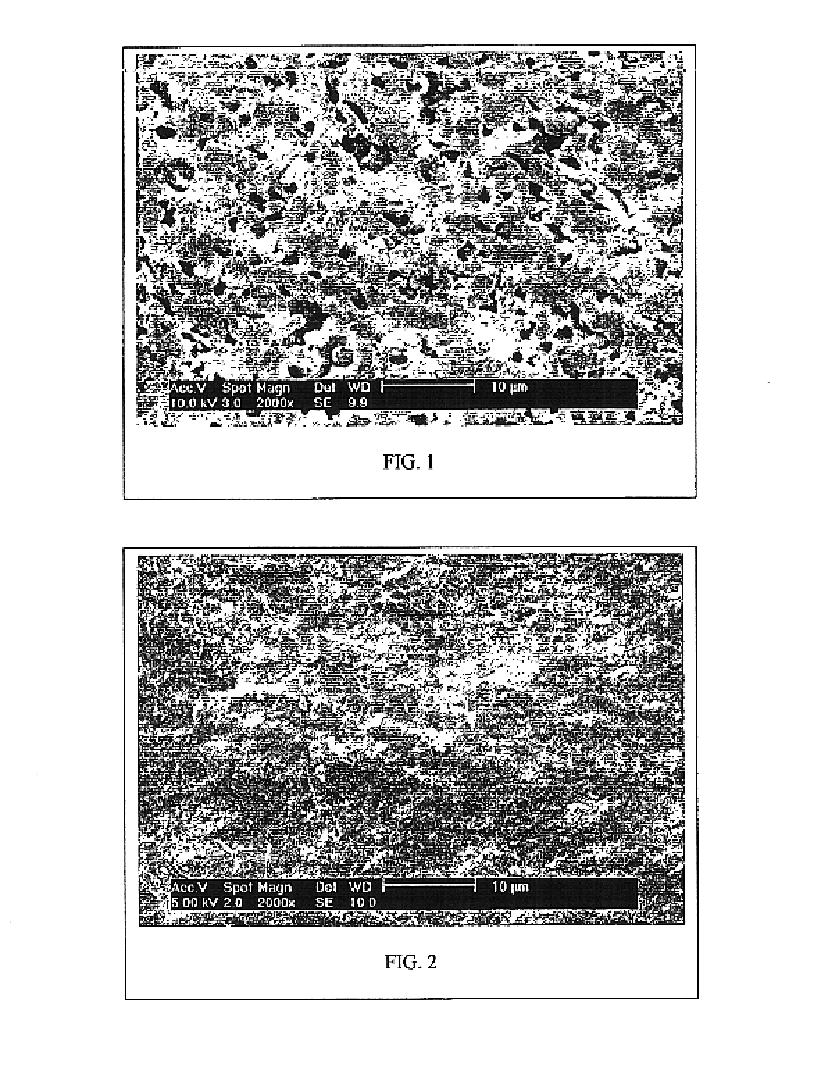Dense lead-free glass ceramic for electronic devices
a lead-free glass ceramic and electronic device technology, applied in the field of composition of ceramic substrates, can solve problems such as crack generation and substrate deformation near the conductor, and achieve the effect of increasing the flexural strength of sintered glass ceramic and reducing the dielectric constan
- Summary
- Abstract
- Description
- Claims
- Application Information
AI Technical Summary
Benefits of technology
Problems solved by technology
Method used
Image
Examples
example i
A glass ceramic composition having the following formula was prepared:
Al2O3: 1.1 grams, BaO: 0.05 grams, ZnO: 1.8 grams, Sb2O3: 0.05 gramsSiO2 (type 1): 16.9 grams, SiO2 (type 2): 18.5 gramsGlass (type 1): 27.2 grams, Glass (type 2): 34.4 gramsSurfactant: 2 gramsAlcoholic solvent: as needed
The composition was homogenized in a Sweco mill with high density Al2O3 balls as grinding media for 12 hours. Fish oil was used as surfactant to destroy the agglomeration of the powder. The resultant mixed slurry was filtered through a screen of 200 mesh and dried at 80 degrees C. for 24 hours. The dried powder was then ground with a mortar and pestle and filtered through a screen of 60 mesh. The resultant mixed powder has a mean particle size and specific surface area of approximately 0.5-2 microns and 2-8 m2 / g, respectively. 2.5 grams of the resultant dried powder was pressed into a disc with a diameter of 20 mm and height of about 2 mm at pressure of 4000 pounds. The disc was sintered at 880 de...
example ii
Another glass ceramic composition having the following formula was prepared:
Al2O3: 2.2 grams, BaO: 0.05 grams, ZnO: 1.9 grams, Sb2O3: 0.05 gramsSiO2 (type 1): 17.9 grams, SiO2 (type 2): 21.2 gramsGlass (type 1): 25.3 grams, Glass (type 2): 31.4 gramsSurfactant: 2 grams, Binder: 25 gramsAlcoholic solvent: as needed
The composition was homogenized in a two-roll mill with high density Al2O3 balls as grinding media for 12 hours first without the binder material. The slurry was further milled for 12 hours after adding the binder. The slurry was treated for degassing by slow rolling it for 24 hours after filtering through a 200 mesh screen. Using the above composition, a multilayer ceramic compact can be fabricated as follows: (1) Coating the slurry to form a green film sheets with thickness of 20-40 micron; (2) Laminating together the green film sheets to form a multilayer ceramic green compact; (3) Punching the multilayer ceramic green compact to form a disc; (4) Burning out the binder i...
PUM
| Property | Measurement | Unit |
|---|---|---|
| softening point | aaaaa | aaaaa |
| softening point | aaaaa | aaaaa |
| temperatures | aaaaa | aaaaa |
Abstract
Description
Claims
Application Information
 Login to View More
Login to View More - R&D
- Intellectual Property
- Life Sciences
- Materials
- Tech Scout
- Unparalleled Data Quality
- Higher Quality Content
- 60% Fewer Hallucinations
Browse by: Latest US Patents, China's latest patents, Technical Efficacy Thesaurus, Application Domain, Technology Topic, Popular Technical Reports.
© 2025 PatSnap. All rights reserved.Legal|Privacy policy|Modern Slavery Act Transparency Statement|Sitemap|About US| Contact US: help@patsnap.com


